
Full height biometric turnstile is an effective crowd control solution for mitigating tailgating and handling moderate throughput
Full height biometric turnstile JDFHT-3 is designed for all applications requiring high-security solutions to mitigate tailgating and handle moderate throughput, providing the most secure, long-lasting, and practical method of accessing facilities. The biometric full height turnstile gate offers bi-directional access control when used with an access control system or any device with a dry contact output (such as a push button) to permit only one person per authorized credential. Supplied with electric ports for card readers, the full height single turnstile pedestrian gate can individually configure each rotation direction as fail-safe or fail-lock. When a valid credential is verified, the entrance gate turnstile opens and allows one controlled spin in the desired direction. Unauthorized entries or tries to follow too closely behind an authorized entry are rejected. The turnstile entry system is reliable, operates in silence, allows only one person per authorized credential, and prevents impromptu incursion attempts with its tall stature.
Full height biometric turnstile JDFHT-3 includes fully automatic type and semi-automatic type. The fully automatic mechanism of the biometric full height turnstile gate uses a brushless DC motor and an accurate positioning encoder in conjunction with a cutting-edge secondary transmission mechanical structure to operate the rotating column fast, precisely, silently, and smoothly. The semi-automatic mechanism has an exclusive professional-grade buffer design that increases operation stability, decreases losses, and guarantees the mechanism's dependability. The mechanical anti-tailgating design used by fully automatic full-height turnstiles and semi-automatic full-height turnstiles effectively realizes that only one person can pass at a time and has very high anti-tailgating performance. Full-height pedestrian turnstile JDFHT-3's distinctive mechanical design lowers running expenses and transforms them into a long-term investment. In order to secure the perimeter of reception areas, fitness centers, theme parks, public buildings, and stadiums, it is primarily utilized outdoors.
Jayda delivers high-quality full-height turnstile solutions at reasonable prices and also customizes appropriate turnstiles to the needs of the project. Please contact us at luke@jaydagate.com if you require assistance.

Full Height Biometric Turnstile Features
1. Low power consumption
2. Robust and long-lasting
3. Smooth rotation
4. Fail-safe or fail-lock configuration
5. Single or bi-directional traffic mode selectable
6. Provide unified, standard electric interfaces to be integrated with various types of access control
7. Suitable to use on-premises require anti-tailgating
8. Accurate and reliable for zero-point lock and unlock
9. Creates a visual and psychological balance between being welcome and secure
10. Reduced maintenance and security costs
Full Height Biometric Turnstile Applications
Stadiums and sports complexes, amusements parks
Employee and visitor access control
Refineries and power distribution centers
Correctional institutes
Military bases
Ports and airports
Full Height Biometric Turnstile Parameters
| Housing Material |
#304 stainless sheet |
| Dimension |
1500 x 1350 x 2300mm |
| Power Supply |
AC110V~240V, 50/60hZ |
| Channel Width |
600mm |
| IP Rate |
IP45 |
| Pass Speed |
30 ~35 persons per minute |
| Input Interface |
Dry contact signal or +12V level signal or DC12V pulse signal |
| Rotating Direction |
Bi-directional |
| Communication interface |
RS485 |
| Gate open when power failure |
Yes |
| Open Time |
0.2 second |
| Life Cycle |
5 million times |
| Working Temperature |
-30°C~+70°C, Relative Humidity: ≤90%, no condensation |
| Working Environments |
Indoor, outdoor (with shelter) |
The Dimensions of Full Height Biometric Turnstile

The Design
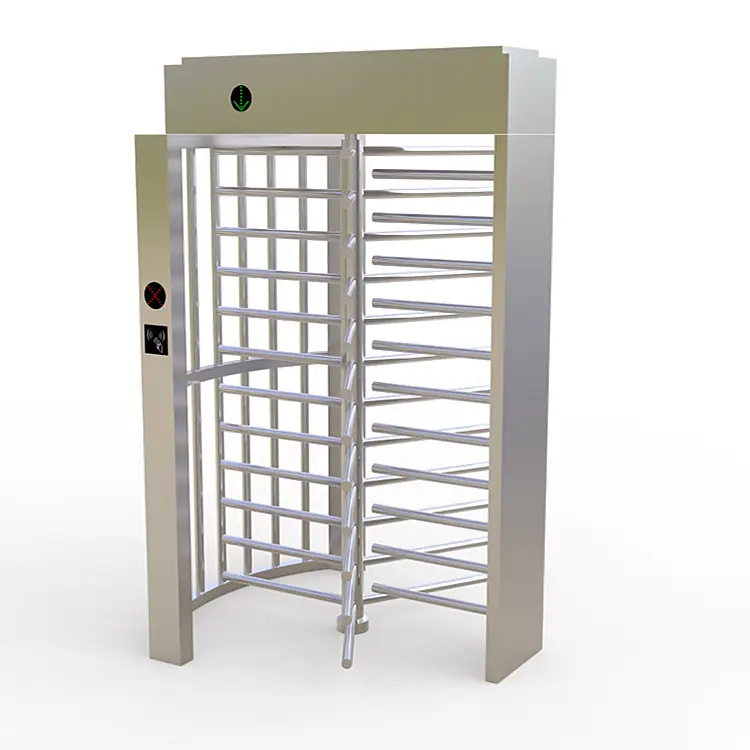
The System Diagram

FAQ
How does a full-height biometric turnstile work?
1) After turning on the system power supply, the system performs a self-test and switches to standby mode.
2) The user gives the device control board a valid enter/exit open signal (the access control system has an open signal by card, and the device system opens the signal by button.
3) The device unlocks for entry and exit when the device controller receives the enter/exit open signal and sends a control signal to the electromagnet, allowing the user to push the bar and gain access.
4) The electromagnet closes the door once the individual enters it, and the system goes into standby mode after the device controller provides the electromagnet a control signal.
5) The system will lock the bar and prevent pedestrian access if the pedestrian fails to give a legitimate open signal and access.
 Full-Height Access Gate JDFHT-14
Full-Height Access Gate JDFHT-14
 High Security Tandem Turnstile JDFHT-13
High Security Tandem Turnstile JDFHT-13
 Dual Lane Full Height Turnstile JDFHT-12
Dual Lane Full Height Turnstile JDFHT-12
 Motorized Full Height Turnstile JDFHT-11
Motorized Full Height Turnstile JDFHT-11







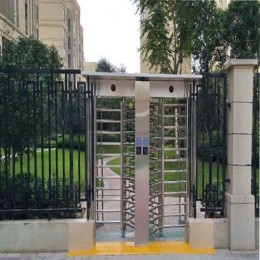
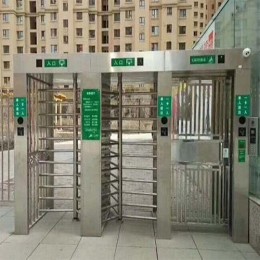

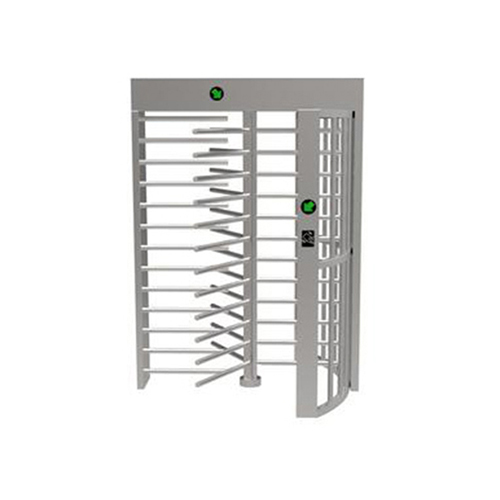

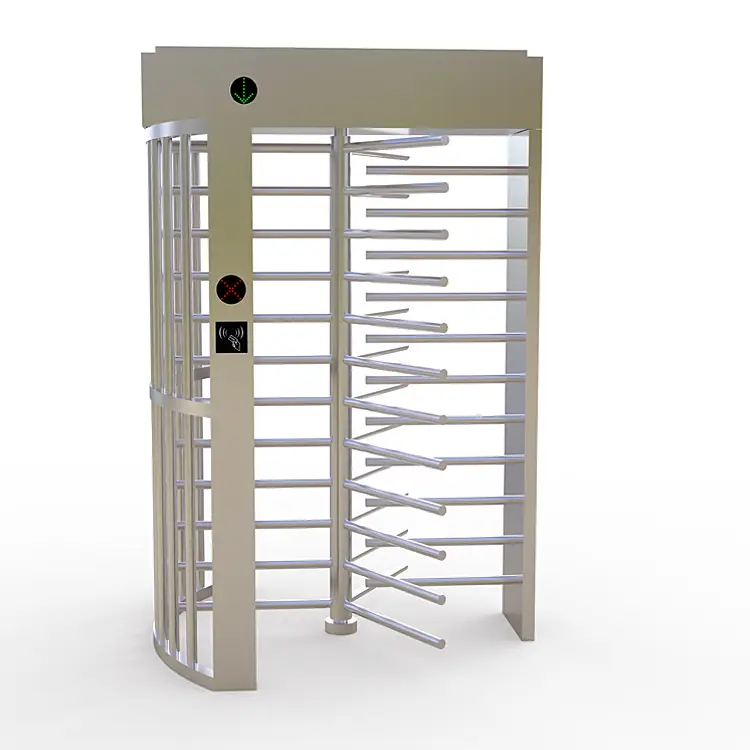

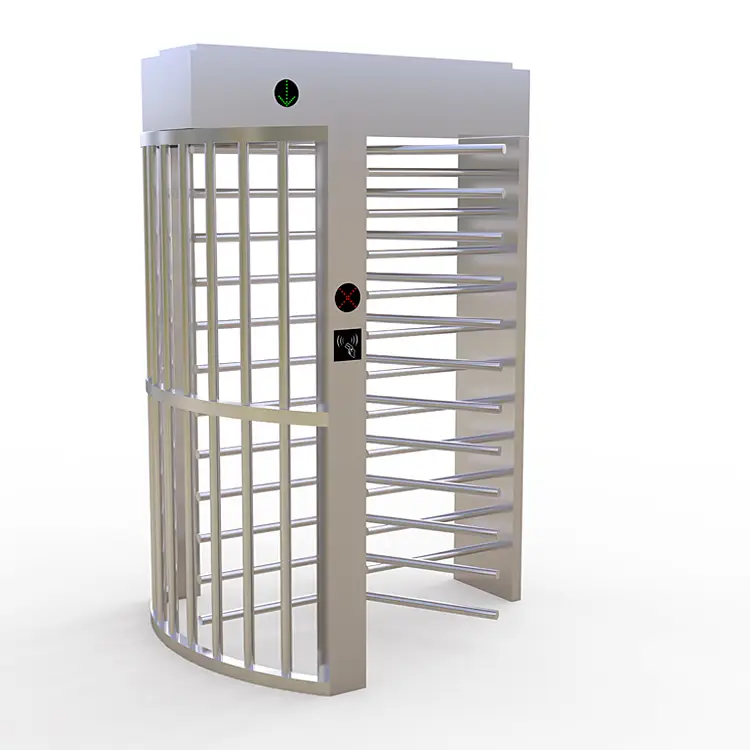






Please leave a message if you are interested in this model